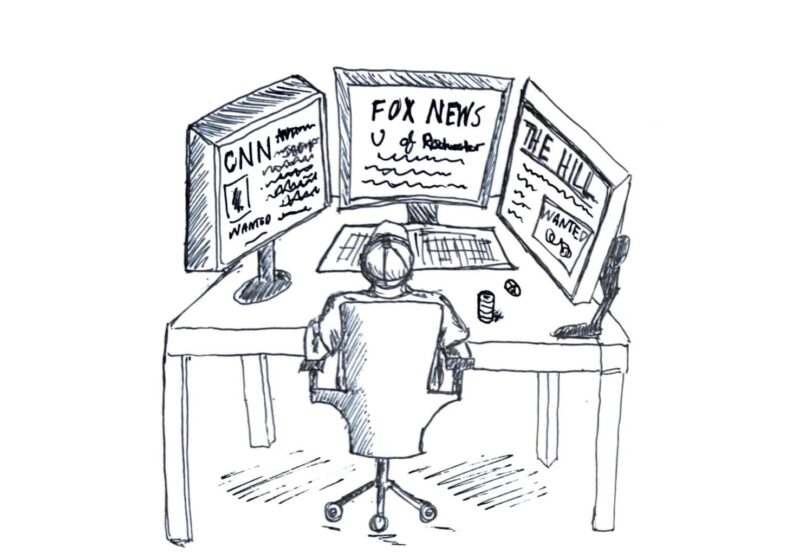We all know the Gleason Library story. It’s the one the Meridians tell—someone is working on a difficult problem on one of the Gleason whiteboards, leaves to get coffee and comes back to find the problem solved and a note that says, “Good luck on finals!”
Meridians are trained to tell stories like this; they emphasize the collaborative spirit of the University. Similarly, while giving tours, some walk through the Periodical Reading Room, calling it the “Harry Potter” Library as their guests gaze on. Prospective students love the library’s old-fashioned lamps and reading tables, as well as the environment that such elements promote.
But, recently, River Campus Libraries (RCL) has been on a quest to rework cherished study spaces around campus in an effort to further promote collaboration and group work. Their plans for Evans Lam Square, which were presented at Monday’s Students’ Association (SA) Senate meeting, prompt many questions about the very nature of libraries and scholarship.
We are concerned that the character of Rush Rhees is being compromised, and, based on our observations of Monday’s Senate meeting, we assume we are not alone in our concerns. RCL states on its homepage that Rush Rhees Library is “iconic” and is “located at the heart of the campus.” We agree, and it precisely for this reason, we argue, that any substantive changes to the libraries must be heavily advertised to students, faculty and members of the University community— something that is not currently the case for the Square.
Library administrators’ plans for Evans Lam Square, which were presented at the Senate meeting, are worrisome. The Square would be located in the central hub of Rush Rhees Library, an area that currently houses computers that many students use to print assignments or readings, as well as the beloved wooden tables that have been the center of much controversy over the past few weeks. The space previously contained the library’s circulation desk, which was uprooted to accommodate a much smaller “Q&i Desk,” and a reference desk, whose location now contains five neon blue and green chairs that can spin. The new plans take these two removals to a new level, stripping the space of a huge swath of its sit-down computers and adding in a litany of mobile elements.
At Monday’s Senate meeting, library administrators expressed their surprise at possible unvoiced opposition to these changes. Students asked if Evans Lam Square would be a comparable environment to Gleason Library, the collaborative study space that is populated by plastic, colorful furniture, or Rettner Hall, whose primary assets are large multicolored couches and rooms full of computers. Library administrators said that Evans Lam Square would not be like these spaces. We believe that changes to spaces within Rush Rhees Library have already contributed to waning appreciation of the library as a classical and iconic space, which is where much of the attractiveness of UR is rooted.
Our concerns have not waned. If more collaborative spaces are
what RCL wants to achieve, we encourage RCL to at least keep them in line with the distinct character of the existing space. Recent renovations to Morey Hall last year were successful in doing so; the same care should be taken to preserve Rush Rhees. RCL seems more concerned with the aesthetic groove of the space and joining in flashy new study space trends, rather than retaining the spirit of an already functioning space. While we appreciate RCL’s efforts, the necessity of these changes doesn’t seem significant enough to merit their drastic implications for both the Library and the identity of the University itself.
More student input needs to be taken into account in this process. At the Senate meeting, the most well-attended this semester, some students seemed surprised or dissatisfied by the proposed changes. There has been a breakdown in communication in which the people using the spaces in the library have not been specifically targeted about the proposed changes.
We suggest creating a website that clearly details all of the proposed changes that were outlined in Monday’s Senate meeting. Flyering the spaces in the proposed Evans Lam Square, as well as putting information cards on the tables in the space, over a period of several weeks would allow students to read about the proposed changes. Additionally, adding a space on said website for more student and faculty voices, would go a long way in allowing library administrators to hear feedback, something they said they are eager to hear. We hope they listen.



